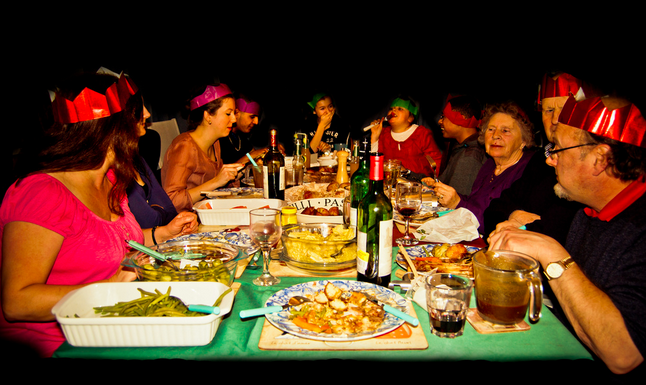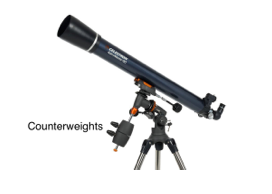Faced with a disappointing combination of mild wet weather, long working days and the frustrating realisation that Costa have changed their Black Forest Hot Chocolate recipe (spoiler alert it’s no where near as tasty); this year Christmas spirit has so far eluded me. But, this mild winter malaise did get me thinking. What causes seasonal nostalgia, what does it look like in your brain and does it serve any beneficial purpose? So please enjoy a bit of Brain Bank festive research as we search for the true spirit of Christmas.
 It has been suggested that the key to Christmas spirit may be familiarity and a sense of nostalgia for times long gone. Indeed, what gets the festive juices flowing more than cheesy Christmas movies, twinkling lights and festive family gatherings – experiences we most likely all share and repeat year after year. Krystine Batcho, nostalgia expert and professor of psychology at Le Moyne College in New York, thinks that this bittersweet sense of seasonal nostalgia really embodies the Christmas spirit and that this feeling may also hold some emotional benefit.
It has been suggested that the key to Christmas spirit may be familiarity and a sense of nostalgia for times long gone. Indeed, what gets the festive juices flowing more than cheesy Christmas movies, twinkling lights and festive family gatherings – experiences we most likely all share and repeat year after year. Krystine Batcho, nostalgia expert and professor of psychology at Le Moyne College in New York, thinks that this bittersweet sense of seasonal nostalgia really embodies the Christmas spirit and that this feeling may also hold some emotional benefit.
But what exactly is nostalgia?
There was a time when nostalgia was though of as a physical illness. This was exemplified by feelings of home sickness experienced by young soldiers serving away from their families for the first time, often culminating in varying physical symptoms including anorexia resulting from loss of appetite. However, we now appreciate that nostalgia is actually linked with a range of emotions, both positive and negative. One study suggests that the predominant profile of nostalgia is a mix of happiness and sentimentality but, it is also recognised that this can be tempered by the sadness of loss and yearnings for a different time. One thing that is pretty much agreed upon however is that the feeling of nostalgia is universal, cutting across cultures, historical periods and developmental stages – even a child can be nostalgic.
Krystine thinks that nostalgia can also be beneficial. Specifically, she suggests that it helps us to maintain a constant sense of identity in the face of large and often traumatic life changes. It provides us with a tangible link to our own personal past and helps us remember who we are. In fact nostalgia is thought to peak in early adulthood, a time when transition and change can become a big part of our lives (think marriage, college, new jobs!).
The holiday season in particular can evoke strong feelings of nostalgia due to repeated experiences shared year on year. This is especially true in regard to relationships. So many of our holiday experiences centre around interpersonal relationships, family gatherings, religious traditions and cultural customs. Think of the festive classic “Driving home for Christmas” and the nostalgic feelings it summons up regarding reuniting with loved ones for the festive season. In fact, this form of nostalgia can help decrease feelings of loneliness by helping people feel connected to family again, even when they are not physically present.
So what is happening in our brains when we experience festive nostalgia?
One study by Kentaro Oba, from the Department of Frontier Health Science, Division of Human Health Science, Graduate School of Tokyo Metropolitan University, shows a relationship between memory and reward systems in the brain, specifically in relation to childhood nostalgia. This study observes co-activation of both the hippocampal formation and ventral striatum during nostalgic experiences. The connection also appeared to be stronger in people who report feeling a strong sense of nostalgia. This suggests that hippocampal memory and ventral striatum reward systems may work together to produce the beneficial and rewarding feelings linked with nostalgia. The researchers suggest that memory retrieval via the hippocampus during nostalgia can trigger a cascade of reward processes including activity in the hippocampal-VTA (ventral tegmental area) loop and culminating in release of the neurotransmitter dopamine. It is therefore speculated that, based on the function of this loop, memory and dopaminergic reward during nostalgia may be involved in psychological resilience. Specifically nostalgia strengthens the association between an autobiographical memory and the feeling of reward. This cycle can induce feelings of positivity and may help those experiencing nostalgia to overcome adversity.
Finally, when it comes to the Christmas spirit one group of researchers from Denmark used functional magnetic resonance imaging to pinpoint how festive imagery can affect the brain. Although only four people took part in this unusual study, the work suggests that festive feelings may be linked with activation of the frontal, parieto-occipital and subcortical brain regions.
Perhaps Christmas is all in the mind but this is proof enough for me that festive feelings are probably good for you – so pass me another mince pie I think E.T is on TV….
Post by: Sarah Fox
Save
Save



 This one is an error many newcomers to the hobby make, partly because of some pretty dodgy marketing – see the unobtainable views pictured on the very basic telescope above. Put simply, it is the expectation that a small telescope operated by someone with little experience will produce celestial views equaling the HST. If you search for a beginner telescope online and run through its reviews there will be a number complaining of blurry images, poor zoom and undefined galaxies. These limitations are sadly just unavoidable consequences of living under a turbulent atmosphere or owning a telescope that doesn’t have the HST’s 2.4m diameter aperture. In the end, I class this as one of the most damaging errors here because for those who make it astronomy becomes a frustration rather than a fascination. However, once you get familiar with the capabilities of your telescope/binoculars you quickly start to appreciate the significance of those faint smudges of light!
This one is an error many newcomers to the hobby make, partly because of some pretty dodgy marketing – see the unobtainable views pictured on the very basic telescope above. Put simply, it is the expectation that a small telescope operated by someone with little experience will produce celestial views equaling the HST. If you search for a beginner telescope online and run through its reviews there will be a number complaining of blurry images, poor zoom and undefined galaxies. These limitations are sadly just unavoidable consequences of living under a turbulent atmosphere or owning a telescope that doesn’t have the HST’s 2.4m diameter aperture. In the end, I class this as one of the most damaging errors here because for those who make it astronomy becomes a frustration rather than a fascination. However, once you get familiar with the capabilities of your telescope/binoculars you quickly start to appreciate the significance of those faint smudges of light!